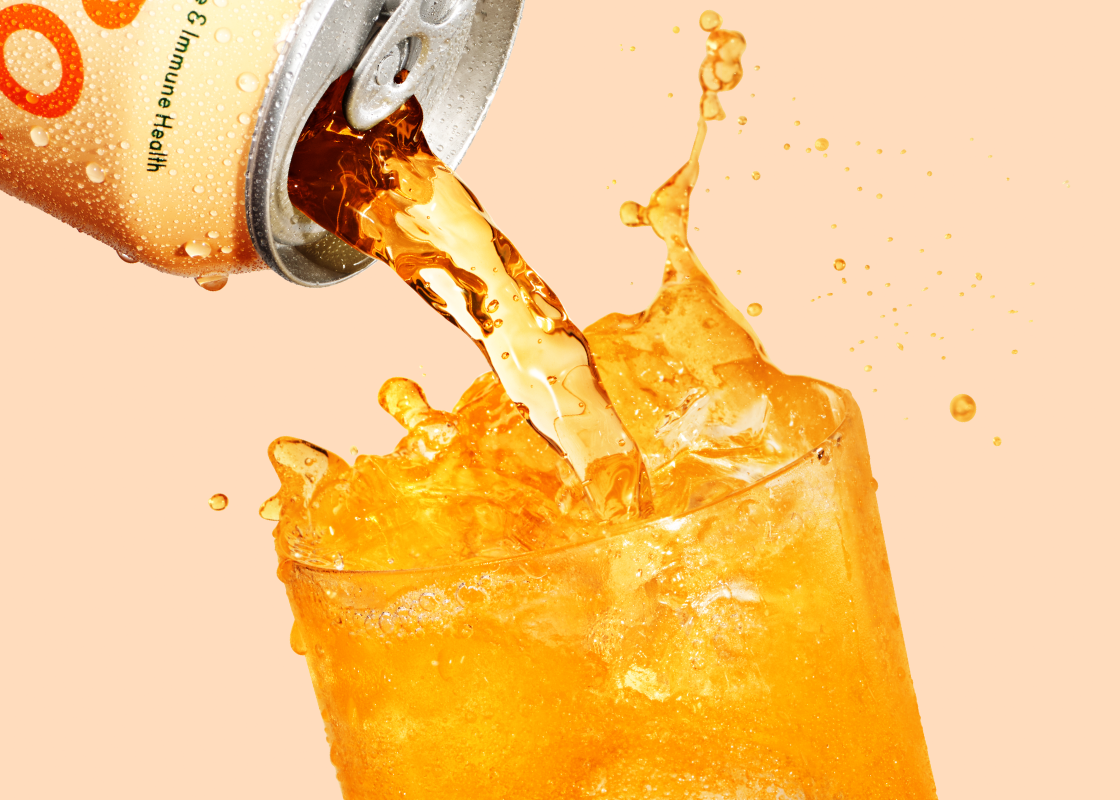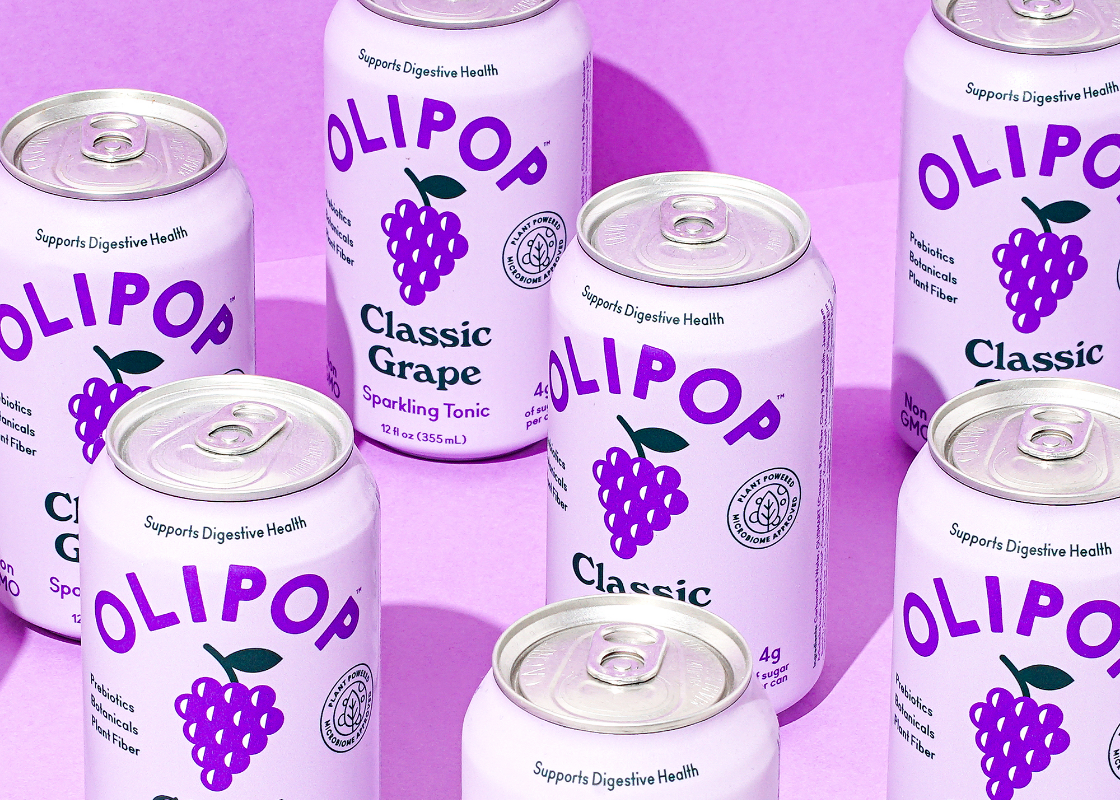Editor's Note: This article is written by Dr. Renee Korczak Ph.D., RDN, CSSD, LD. who is a paid member of the OLIPOP team. She specializes in digestive health and helps review OLIPOP content for scientific accuracy.
Halloween is a fun-filled holiday dedicated to costumes, tricks, and treats (especially treats!). According to some sources, children, on average, consume about three cups of sugar on Halloween.[1] That is the equivalent of just over 600 grams of sugar or about 15 cans of a standard serving of soda….yikes!
This exceeds public guidance from the 2020–2025 Dietary Guidelines for Americans, which recommends that those two years and older keep their intake of added sugars to less than 10% of total daily calories. This translates to no more than 200 calories from added sugars. If you were following a 2,000-calorie diet, this equals about 12 teaspoons or 48 grams of added sugar daily.[2]
If you're a parent worried about how much sugar your child typically consumes on Halloween, you're not alone. Letting your child enjoy the holiday without coming across as too restrictive can be tricky. To help, consider these tips from a registered dietitian. (Pst… we also have a guide on healthy Halloween tips for adults!) After all, we all want to enjoy Halloween—without overloading on the sugar!
Top Halloween Tips for Parents
So, to help, here are my top tips as a registered dietitian for keeping my kids healthy and happy on Halloween:
Create a Healthy, Non-Restrictive Food Environment
Cook well-balanced dinners together that include lean protein, fruits, fiber-filled vegetables, and whole grains. Set a few pieces of candy out for dessert to let your child decide if they want it or not. When you make candy the “forbidden food,” your child is more likely to overindulge and feel like it is off-limits. Ultimately, this means your child will want to eat even more candy.
Involve Kids in Halloween Food Preparation
Remember that Halloween is not just about candy! There are many holiday fun-filled foods that can be celebratory and nutritious. Try getting your children involved in making nutrient-dense recipes that carry a Halloween theme.
Some examples are:
- Pumpkin Pancakes: Pumpkin is so easy to incorporate into your morning pancakes. It's as easy as adding a small can of 100% pure pumpkin to your traditional pancake mix. Look for pumpkin can brands that are 100% pure and free from added sugars, sodium, and other preservatives. Then top with your favorite toppings, like sprinkled cinnamon, pecans, and maple syrup, for a delicious breakfast.
- Dried Fruit Jack-O-Lanterns: Use dried apricots, a hint of chocolate icing to decorate the eyes and mouth, plus sprigs of mint or another herb to mimic the pumpkin stem.
- Frankenstein Guacamole: Use green, ripe avocados for your recipe and serve with blue corn chips and fibrous veggies to dip.
These foods contain a matrix of nutrients, including beta-carotene (a form of vitamin A), vitamin C, fiber, monounsaturated fat, potassium, and zinc, to name a few.
Incorporate Prebiotics
Incorporate prebiotics before, during, and after Halloween to help support gut health for your kids. Pack prebiotic ingredients into Halloween treats that can be used at a party, after school, or even for trick-or-treat bags. You can find prebiotics in oats, bananas, onions, garlic, and artichokes, but adding other fiber-rich foods and beverages can help too.[3]
Check out this prebiotic-packed energy ball recipe with oats as an example. If you want a prebiotic-filled beverage, try OLIPOP, a high-fiber soda with 2-5g of sugar compared to 39g in a standard cola. Hint: Classic Grape makes for an excellent kid-friendly and non-alcoholic Halloween drink!
Make Halloween an Active Holiday
To help burn extra calories consumed from sugar, make Halloween an active day! Depending on your child's age, the Centers for Disease Control (CDC) recommends sixty minutes of daily aerobic activity that includes running, walking, or anything that makes their hearts beat faster.[4] This is easy to achieve during the beautiful Halloween fall weather. Take part in local Halloween parades, take a family walk or bike ride, or enjoy a local pumpkin patch with kid-friendly activities.
Rethink Trick or Treat Bags
Limit the size of the trick-or-treat bag to something more sensible than a pillowcase. No need to supersize it! Pick a trick-or-treat bag that is reasonable in size, and that does not encourage candy overindulgence. At the end of trick-or-treat time, sit down with your child to sort through pieces and make a donation pile for a local shelter.
Halloween Parent's Survival Guide: The Takeaway
You and your kids can enjoy Halloween with some candy as long as you balance it out with fiber-rich, gut-friendly foods. Keeping you and your kids’ gut happy before, during, and after the holiday is easy when you mix meals and snacks with prebiotics. This helps keep the gut healthy and supports your immune system.[5] So have fun, and Happy Halloween!
Sources
- Halloween Candy Consumption in the US. Business Insider https://www.businessinsider.com/halloween-candy-consumption-usa-facts-statistics-2019-10
- U.S. Department of Agriculture and U.S. Department of Health and Human Services. Dietary Guidelines for Americans, 2020-2025. 9th Edition. December 2020. Available at DietaryGuidelines.gov.
- International Scientific Association for Prebiotics and Probiotics. Prebiotics. https://isappscience.org/for-consumers/infographics/
- Center for Disease Control and Prevention (CDC). How much Physical Activity Do Children Need? https://www.cdc.gov/physicalactivity/basics/children/index.htm
- Mohammadkhah A, et al. Development of the microbiome in children, and lifetime implications for obesity and cardiovascular disease Children 2018; 5(12): 160.
- Children, on average, consume about three cups of sugar on Halloween.
- Halloween is not just about candy, there are many holiday fun-filled foods that can be celebratory and nutritious.
- Incorporate prebiotics prior to, during, and after Halloween to help support gut health for your kids.






















